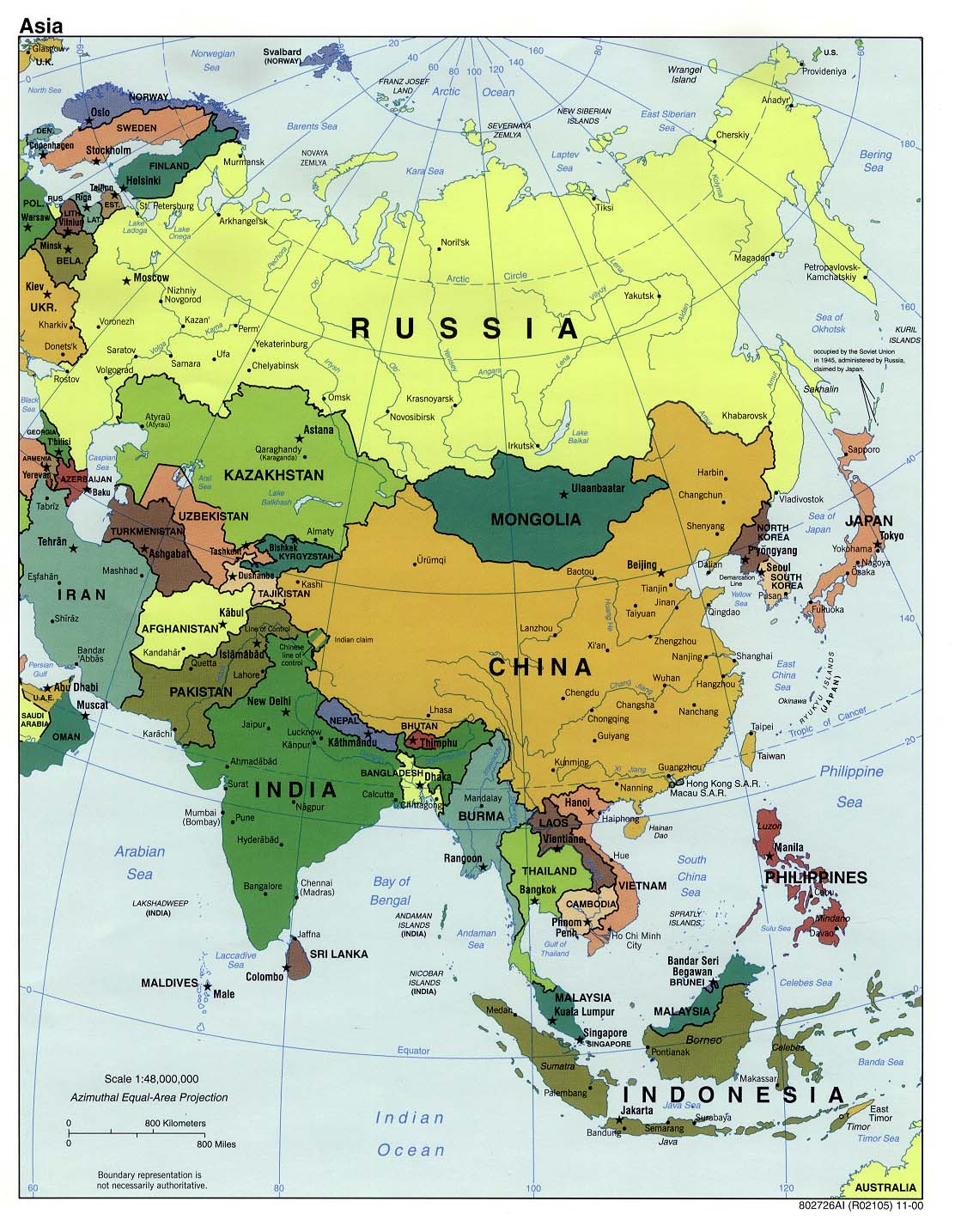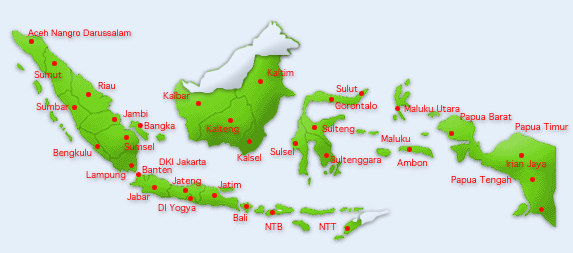Introduction
Indonesia is the fourth
of the most populous countries in the world in 2002. It is also the largest
Muslim countries in the world. The Muslim population is about 204,224,302
people or 88 % from the total 232,073,071 (2002).
Indonesia is the located in the South-East
Asia. Indonesia is the
largest archipelago in the world. It consists of five major islands
and about 30 smaller groups. The figure for the total number of islands
is 17,508 according to the Indonesian Naval Hydro-Oceanographic Office.
The archipelago is on a crossroad between two oceans, the Pacific and the
Indian, and bridges two continents, Asia and Australia. This strategic
position has always influenced the cultural, social, political, and economic
life of the country.

Map of Asia
Geography
Indonesia is an archipelago in Southeast
Asia consisting of 17,508 islands (6,000 inhabited) and straddling the
equator. The largest islands are Sumatra, Java (the most populous), Bali,
Kalimantan (Indonesia's part of Borneo), Sulawesi (Celebes), the Nusa Tenggara
islands, the Moluccas Islands, and Irian Jaya (also called West Papua),
the western part of New Guinea. Its neighbor to the north is Malaysia and
to the east is Papua New Guinea.
Indonesia, part of the “ring of fire,”
has the largest number of active volcanoes in the world. Earthquakes are
frequent. The “Wallace Line,” a zoological demarcation between Asian and
Australian flora and fauna, divides Indonesia.

Map
of Indonesia

The
People
Indonesia has about
500 tribes and correspondingly, it has about 500 languages and dialects
spoken in the archipelago. The population in Indonesia has now reach the
fourth most populated country in the world after China, India, and the
United States of America. The people of Indonesia are a mix between the
native people and the newcomers that came during the Neolitic Period (3000-2000
BC) from the Asian mainland to the south through a large-scale migration.
The citizenship of Indonesia is governed by the Nationality Act to distinguish
the qualification of a person of being an Indonesian since the beginning
of independence on August 17, 1945.

Population
According to Info
Please the number of population of Indonesia in
the year 2002 is 232,073,071
.The population policy is directed
toward development of the population as human resources in order that the
national development can be effective and valuable, while the quality of
life is gradually improving. Meanwhile, the control of population growth
is carried out through efforts to lower the birth and mortality rate, especially
that of infants and children. These efforts in particular have been implemented
through family planning programs which also have the purpose of improving
the welfare of mother and child and at the same time create a small, happy,
and prosperous family.
The implementation of population
policy has noted significant progress. In 1998, the life expectancy was
64.7 years, the crude death rate was 7.7 per 1.000 people, and the infant
mortality rate was 50 per 1.000 live birth. Meanwhile, the crude birth
rate in 1998 was 22.7 per 1.000 people and the total fertility rate was
2.59 per woman. Until June 1999, the total population is approximately
209 millions.

Religions
Most of the Indonesian
people are Muslim. The composition of Indonesian people according
to their religion are Muslims 87%, Christian 9%, Hindu 2%, other 2%.

Languages
Indonesian has a national
language as an official language which is used by all of Indonesian citizens
to communicate each other, called Indonesian or Bahasa
Indonesia. Other languages which are used by Indonesian people are
Dutch, English, and more than 583 languages and dialects all over the country.

Administrative
Divisions
Indonesian is divided
into 32 provinces
(August 2002). Each province is divided into several regency
(called Kabupaten) and municipality
or city (called Kota). The capital city of Indonesia is Jakarta.

Map of 32 Provinces of Indonesia
(2000)

Interesting Places
Indonesia
has many interesting places to visit, such as in Jakarta,
Bali,Java,
Sumatra,
Sulawesi,
and Lombok.
Copyright
@ 2002
Updated: December
4, 2002
|